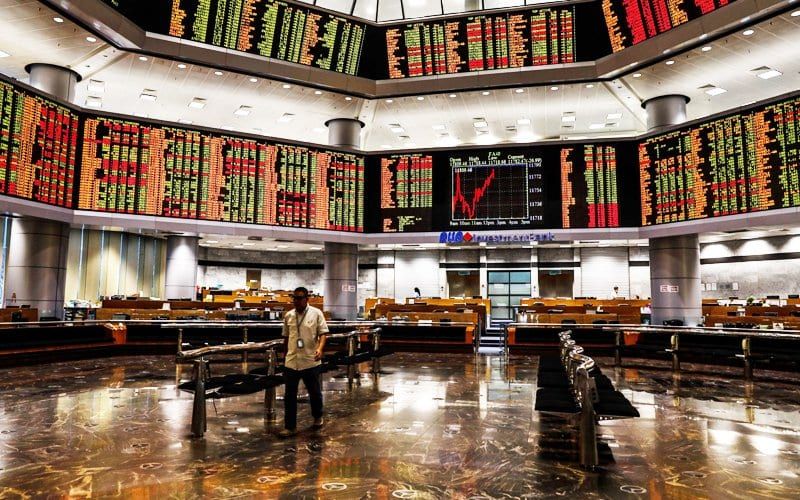BANK Negara Malaysia (BNM) may cut the Overnight Policy Rate (OPR) by another 25 basis points (bps) to 2.25% in its next meeting on May 5, according to AmInvestment Bank Research.
BNM has reduced the OPR by 50bps to 2.5% leading to a cumulative rate reduction of 75bps since 2018. Most central banks have cut interest rates to address the impact of the Covid-19 pandemic and Malaysia is not spared from this.
Recently, the Bank of England reduced its benchmark rate by 50bps to 0.25%. On March 15, the US Federal Reserve announced an emergency rate cut of 100bps on top of the earlier rate reduction of 50bps which saw the Fed rate being lowered to 0.25% from 1.25%.
“(There are) stronger signals for another rate of 25bps cut based on the decline in KLIBOR and increase in spread between the KLIBOR and interest swap rate,” said AmInvest.
Following the 25bps OPR cut to 2.5% on March 3, the research house noted a drop in the three-month KLIBOR rate to 2.78%. Also, the rate on interest swap declined. This widened the spread between the KLIBOR and interest swap rate, signalling that the market has priced in another interest rate cut.
The research firm also said there was less monetary flexibility for the central bank to further cut the OPR after the next rate reduction in May 2020. This is in view of the weaker ringgit which has been impacted by the weakness in oil prices. There remain external uncertainties (unresolved trade tension, Covid-19, collapse in oil prices with Russia’s reluctance to join Opec members) and local political uncertainties that could weigh on domestic GDP growth for 2020.
AmInvest said it saw parallels to the factors affecting the global economy now to the 2008-2009 crisis which saw the OPR being trimmed by a total of 125bps from 3.25% to 2% in 2009 before rising by 75bps the following year (2010).
Meanwhile, the Statutory Reserve Requirement (SRR) was also reduced by 300bps to 1% from 4% between 2008 and 2009. With another rate cut of 25bps in May 2020, the cumulative reduction in OPR will be 100bps since 2019. This will be close to the 150bps rate cut observed during the 2008-2009 crisis.
The ringgit now stands at 4.37 against the US dollar compared to an average of 3.38 during the 2008-2009 financial crisis. Nevertheless, the possibility of further cuts to the SRR in addition to the 50bps reduction seen in November 2019 will not be ruled out.
The 25bps reduction in the benchmark rate will mildly impact banks’ earnings of 1%-2% while the net interest margins of most banks will be impacted by 2-4bps. The impact of any OPR change will depend on the timing of its occurrence and it will be short term (estimated one to two quarters) with fixed deposit rates eventually repriced down to catch up with the changes in lending rates.
Most banks have guided that their exposure to sectors directly impacted by Covid-19 (tourism, hospitality, airlines, wholesale, retail trade and manufacturing) as a percentage of total loans ranged between 2% and 3%.
The 2%-3% exposure appears to be comforting. Nevertheless, AmInvest opined that banks’ indirect exposures to sectors which are not commonly identified could also be impacted by the outbreak of the virus.
“These borrowers may not have access to the relief BNM facility which is capped at RM2 bil in total, offering a low interest rate of 3.75% or to be allowed a moratorium period of six months permitted by BNM to defer repayments or even be restructured and rescheduled,” the research house said.
It pointed out that most banks have already been vigilant and monitoring the oil and gas sector closely after the earlier plunge in oil prices with exposure to this segment gradually declining.
Among the larger-cap banks, Maybank’s exposure to the sector has been reduced to 2.8% as of December 2019 (Dec 2018: 3.57%) while CIMB has an exposure of 2.3%. RHB Bank’s exposure to the sector has been lowered to 2.4% in December 2019 compared to 2.8% in December 2018. Meanwhile, Public Bank, Hong Leong and Alliance Bank’s exposure to the oil and gas sector is minimal, making up less than 1% of their respective total loans.
The research firm also said there was low visibility on how Covid-19 and the lower oil prices will last but it has conservatively imputed an additional 10bps credit cost onto all banks’ earnings for FY20/21.
It expects upticks in impaired loans and a rise in provisions for banks in FY20/21 from a slower economic growth for 2020. Together with the penciling in of another 25bps cut in the OPR, it has reduced banks’ earnings for FY20/21 by 6.2%.
AmInvest maintained its neutral outlook for the banking sector in view of the headwinds to interest income from rate cuts and potentially higher credit cost from external and domestic political uncertainties. – March 19, 2020









